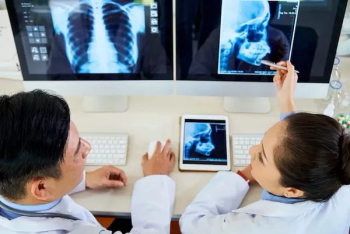
MRI Helps Diagnose Appendicitis
Using MRI to diagnose appendicitis reduces need for intravenous and contrast agents.
MRI is effective in assessing appendicitis in children and younger adults presenting with acute lower quadrant (RLQ) pain, according to a study published in
Researchers from the University of Arizona College of Medicine and the University of Arizona College of Public Health in Tucson, performed a retrospective study to determine the accuracy of unenhanced MR imaging in the detection of acute appendicitis in patients younger than 50 years who present to the emergency department with right lower quadrant (RLQ) pain.
The researchers looked at data from 403 patients, aged three to 49 who presented to the emergency department with RLQ pain and who underwent MR imaging. The researchers measured MR imaging room time and prospective image interpretations from clinical records to document acute appendicitis or other causes of abdominal pain. Final clinical outcomes were determined for 77 patients by surgical results, for 291 patients by telephone follow-up and review of patient medical records, and for 35 patients by expert panel assessment if no follow-up data were available.[[{"type":"media","view_mode":"media_crop","fid":"48532","attributes":{"alt":"MRI","class":"media-image media-image-right","id":"media_crop_9813119690497","media_crop_h":"0","media_crop_image_style":"-1","media_crop_instance":"5792","media_crop_rotate":"0","media_crop_scale_h":"0","media_crop_scale_w":"0","media_crop_w":"0","media_crop_x":"0","media_crop_y":"0","style":"height: 128px; width: 170px; border-width: 0px; border-style: solid; margin: 1px; float: right;","title":"©nav/Shutterstock.com","typeof":"foaf:Image"}}]]
The results showed that mean total room time was 14 minutes for MR imaging among the 403 patients. Sixty-seven patients were found to be positive for acute appendicitis through MR imaging; 336 had negative findings. The MR imaging had a sensitivity of 97% and specificity of 99.4 %. A total of 173 patients (51.5%) were given an alternate diagnosis.
The researchers concluded that using MR imaging in this patient group offered a highly sensitive and specific evaluation of RLQ pain without the need for intravenous or oral contrast material.
Newsletter
Stay at the forefront of radiology with the Diagnostic Imaging newsletter, delivering the latest news, clinical insights, and imaging advancements for today’s radiologists.




